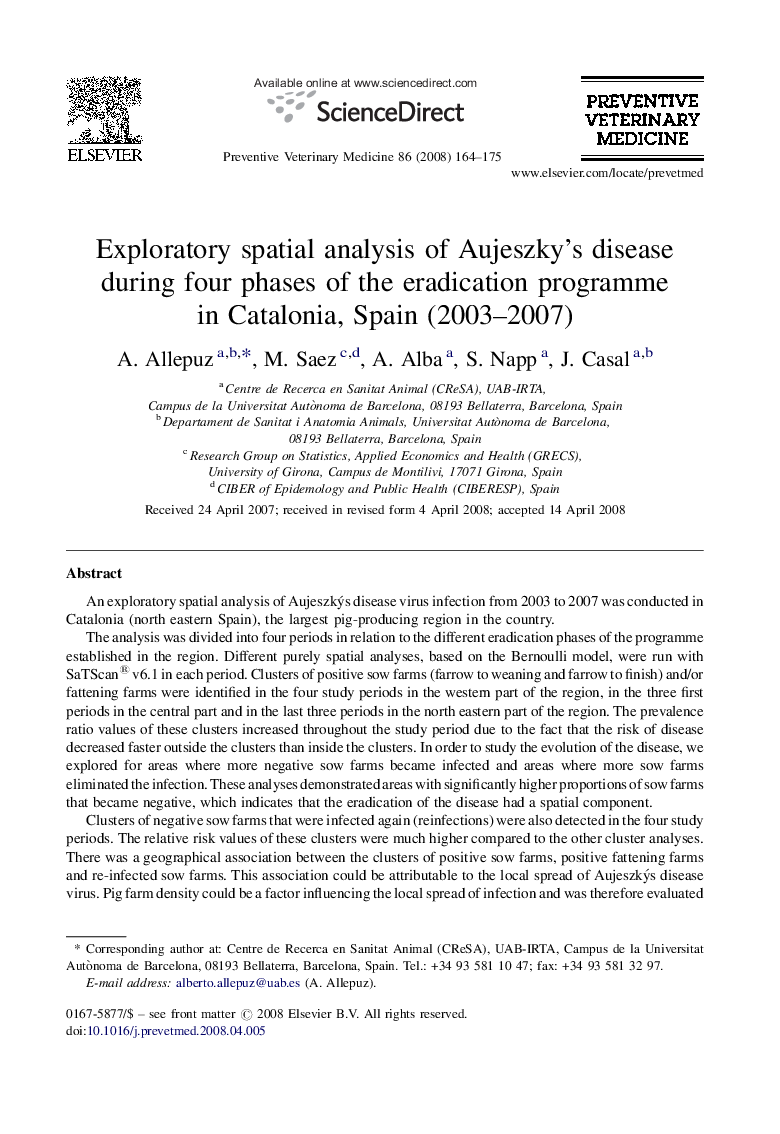| Article ID | Journal | Published Year | Pages | File Type |
|---|---|---|---|---|
| 2453227 | Preventive Veterinary Medicine | 2008 | 12 Pages |
An exploratory spatial analysis of Aujeszkýs disease virus infection from 2003 to 2007 was conducted in Catalonia (north eastern Spain), the largest pig-producing region in the country.The analysis was divided into four periods in relation to the different eradication phases of the programme established in the region. Different purely spatial analyses, based on the Bernoulli model, were run with SaTScan® v6.1 in each period. Clusters of positive sow farms (farrow to weaning and farrow to finish) and/or fattening farms were identified in the four study periods in the western part of the region, in the three first periods in the central part and in the last three periods in the north eastern part of the region. The prevalence ratio values of these clusters increased throughout the study period due to the fact that the risk of disease decreased faster outside the clusters than inside the clusters. In order to study the evolution of the disease, we explored for areas where more negative sow farms became infected and areas where more sow farms eliminated the infection. These analyses demonstrated areas with significantly higher proportions of sow farms that became negative, which indicates that the eradication of the disease had a spatial component.Clusters of negative sow farms that were infected again (reinfections) were also detected in the four study periods. The relative risk values of these clusters were much higher compared to the other cluster analyses. There was a geographical association between the clusters of positive sow farms, positive fattening farms and re-infected sow farms. This association could be attributable to the local spread of Aujeszkýs disease virus. Pig farm density could be a factor influencing the local spread of infection and was therefore evaluated for clusters of re-infected sow farms and clusters of sow farms that eliminated the infection. The mean density of pig farms was 0.40 farms/km2 (median of 0.28 and standard deviation of 0.33) in clusters of sow farms that became negative and 1.51 (median of 0.70 and standard deviation of 1.61) in clusters where more sow farms became positive (p-value < 0.05).
